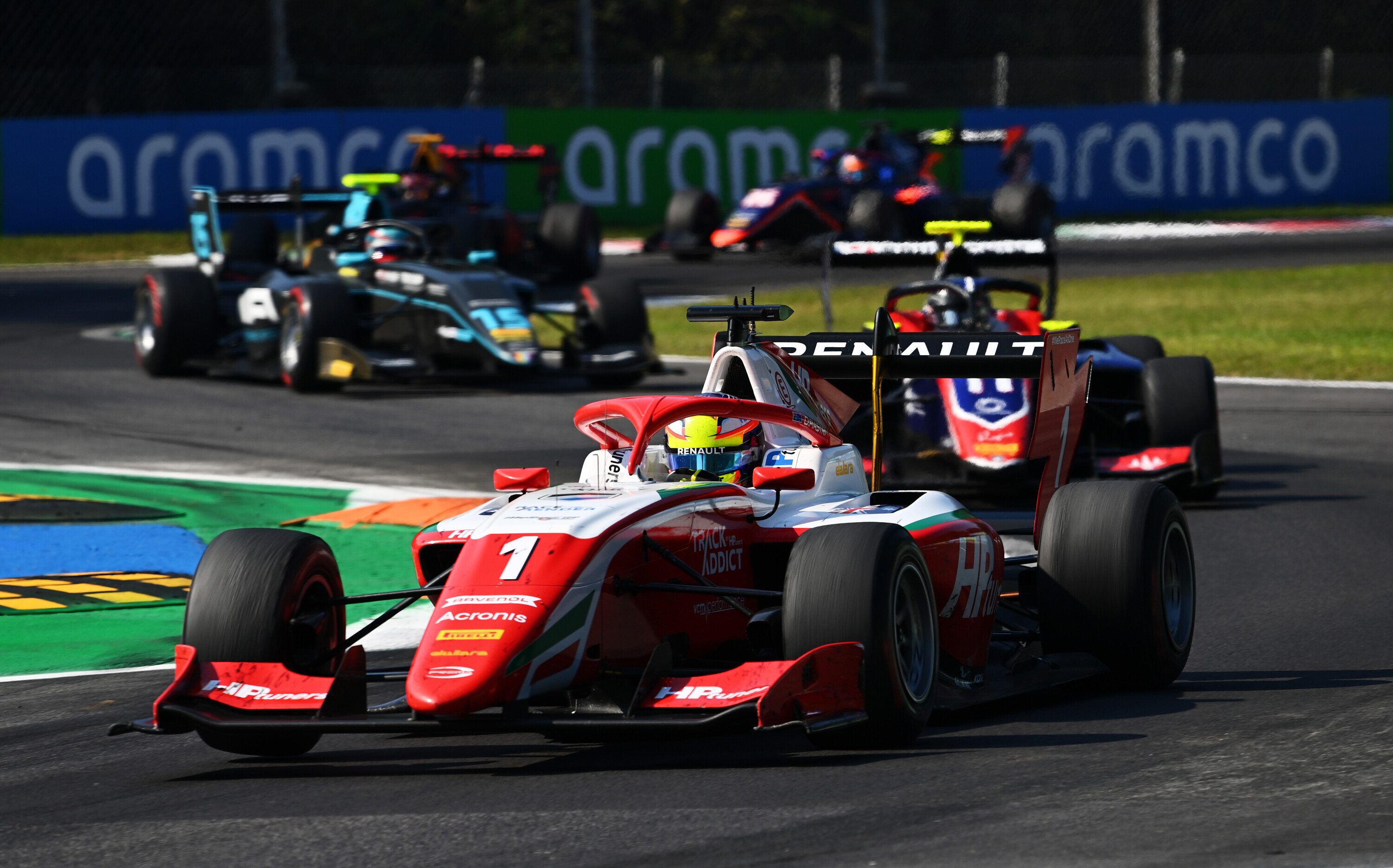FIVE billion euro is a lot of money to develop a car.
Mercedes-Benz, for example, spent ¤2bn on the W212 E-Class launched in 2009, and a further ¤1bn on the new-generation E-Class arriving here later this year, a car it claims is the company’s most advanced production vehicle ever.
Five billion euro is a lot for just one car. But the Giulia is not just one car. It debuts a platform, a flexible architecture dubbed ‘Giorgio’ that will underpin a range of new-generation Alfa Romeo models, including two SUVs and possibly a rear-drive Giulietta replacement, within the next six years. A successor to the larger 166 sedan is also under consideration, but further out.
Five billion euro also paid for the development of three new engine families – a 2.0-litre petrol and 2.2-litre diesel, and a 2.9-litre twin-turbo V6 – that will power Giulia and the SUVs.
Five billion euro, then, is not a lot to spend on five completely new cars and three completely new engines.

Wheels flew to Balocco in northern Italy to drive the Alfa Romeo Giulia. This is what we learned.
“April 29, 2013,” Krief says. “That’s when work started on the Giulia. I got a call just the week before from [Fiat-Chrysler Automotive CEO Sergio] Marchionne and was told we want to do a completely new thing… rear-wheel drive… new Alfa Romeo… so we start from scratch.”
Krief, formerly a Ferrari engineer, heads product development for Alfa Romeo. Since that day three years ago, the Giorgio platform, and the first two models it will deliver – the Giulia sedan and 2017 Stelvio SUV, a rival for the Jaguar F-Pace and BMW X3 – have been his life.
But life began much earlier for the project that was meant to succeed the 159 sedan way back in 2010.
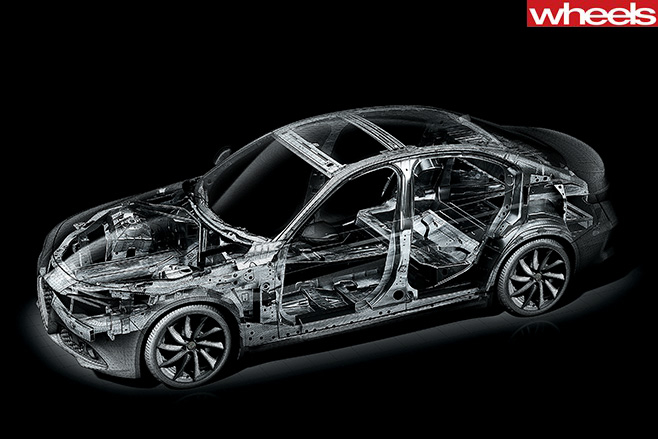
Plans for a 159 successor were almost signed off by Marchionne in 2007 as one of many models to be co-developed in a joint-venture with BMW. Both sedan and wagon would share the 3 Series’ rear-drive platform. A replacement for the 166 would be built on 5 Series architecture.
In return, Alfa would develop a new rear-drive platform for B- and C-segment cars for both brands. This would, of course, throw up packaging compromises, especially in rear-seat legroom, but a Wheels source involved in the JV business case says that was of little concern, to Alfa at least.
“For sure we knew this… we didn’t worry,” our source revealed. “Driving dynamics came before comfort. We wanted rear-drive for all Alfa Romeo models. And we had a very good positioning plan, too: [Alfa Romeo models] would be lighter and more powerful than the BMW ones, and more affordable.”
Rear-drive, light weight, better power-to-weight, more affordable, and Italian. What’s not to like?
But instead of going into partnership with BMW, Fiat Group saw an opportunity in struggling Chrysler. Development plans were put on hold, and eventually cancelled when Fiat bought a controlling stake from investment firm Cerberus in early 2009.
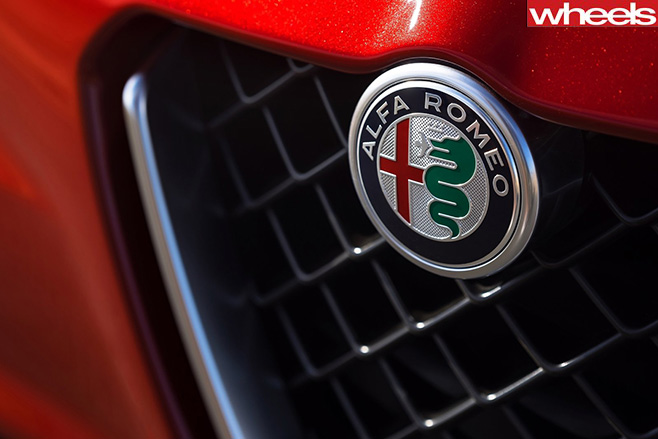
Another Ferrari alumni, Roberto Fedeli, now chief technical officer for Alfa Romeo and Maserati, explains further.
“The plan three years ago was to relaunch completely the Alfa Romeo brand. Obviously Mr Marchionne had this thought before. But he decided to enact this kind of plan when the conditions of the company were much better … when the money was there in order to be spent doing this kind of model.
“It was a choice of FCA’s to concentrate during the last years in doing something that let the group grow up; to restart the program, to make the integration with Chrysler and so on.”
Fedeli’s nickname at Ferrari, where his credits include the F12 Berlinetta and La Ferrari hybrid supercar, is The Prince. While at Ferrari, Fedeli was instrumental in the Giulia program’s genesis before leaving FCA for a 16-month stint with BMW’s i Division. He was poached back by Marchionne in February this year.
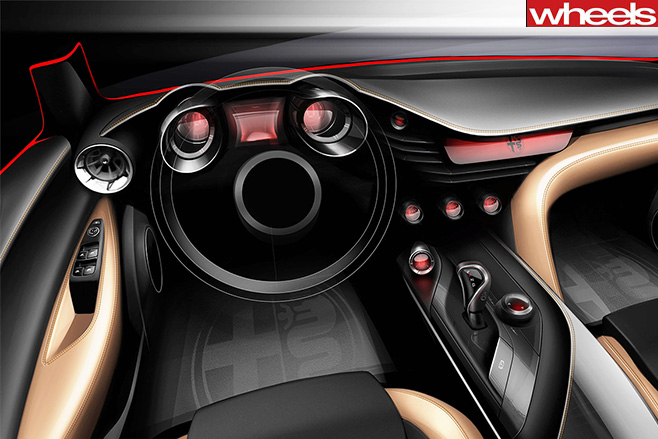
“Three years ago I was in Ferrari. And I remember at the end of April, Mr Marchionne came to Maranello and spoke to Montezemolo, who asked me to give a couple of guys – one for chassis and one for engine – because he had in mind to relaunch Alfa and [he wanted] experience from Ferrari guys. I told him, ‘No, it’s not possible. I have a limited number of people and I have to develop Ferrari models’.
“You can imagine the discussion that ensued and what the final decision was… I gave him two guys.
“The first one was Philippe Krief, and the other was head of gasoline engines Gianluca Pivetti, responsible for Ferrari engines. He became immediately the boss of Alfa Romeo engines… but without engines, without anything.”
Fedeli says Krief and Pivetti moved to Modena the very next day to start the Giorgio project.
“Then in a couple of days more, [they asked me for a] third guy from FCA human resources department. His job was to help these two guys build the team. In one year they hired 400 people, and in another six months another 200 people. The team eventually became 800 people. And they were working day and night.”
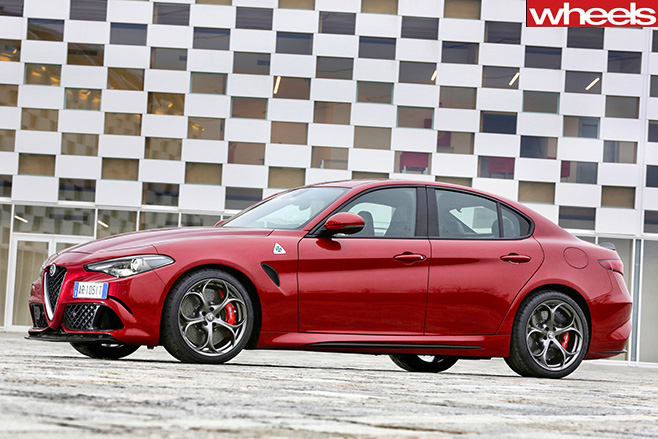
Two skunkworks were established, confirms chief exterior designer Alessandro Maccolini, the man who penned the Alfa Romeo 4C and current Giulietta. One in Modena for engineers, the other at FCA’s Centro Stile design home in Turin.
“Yes, really the team was divided,” says Maccolini. “In Modena there was this skunk team for all the technicians. For style it was a skunk team in Turin, in Centro Stile. This team was absolutely divided from the other brands in Centro Stile. This was absolutely a priority from the beginning of the project, to maintain a strong identity with no contamination.
“We stopped transfer within the brands, making sure the team was only Alfa Romeo because it was absolutely top secret. It was a closed shop. A special [security] badge [was required] even inside Centro Stile.”
Maccolini tells us the Giulia design challenge was twofold: firstly, to evolve Alfa’s design language for a new generation while respecting the brand’s 106-year heritage; secondly, to exude ‘Italian-ness’.

“Maybe looking at the car you don’t see an Alfa Romeo from the past, but you feel something… The front, the rear treatment, the [side] section of the car. I think it’s more important to have the feeling of an Alfa Romeo, not the copy of an Alfa Romeo from the past.”
And Italian-ness?
“I know it’s not [always] easy to understand the difference between an Alfa Romeo design and a competitor’s. In this segment, for example, take a competitor’s greenhouse and look at the transition from the side to the back. You will see differences. On the back we needed this round shape because we like to emphasise this treatment, the beauty and the elegance of the car.
“[At the same time] we have to strike a balance between what we need for style, what is required for aerodynamics and handling, etc. Without compromise for Philippe’s team, but again a good combination for the car, for the complete product… not only style. When you see the Giulia, you can see that it’s enabled the team to work with those in a way that still allows that sculpture to come through. That to me is the Alfa Italian-ness, that pure sculpture. Clean but expressive qualities, and it still maintains an amazing proportion.”
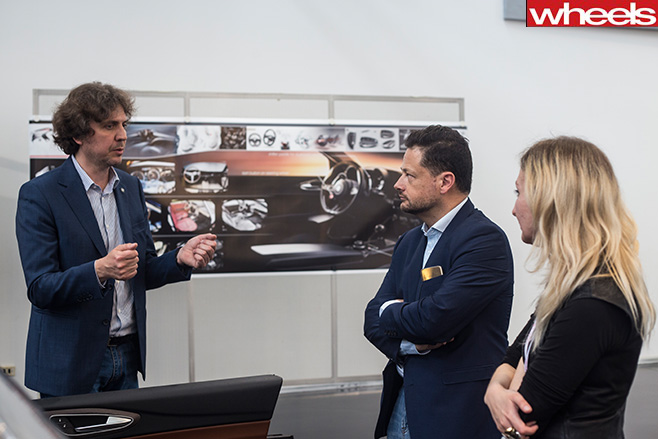
Both Maccolini and Krief cite the ‘creative tension’ that existed between Giulia designers and engineers.
“That creative tension… the best products come out of that,” explains Maccolini. “It’s a healthy tension. There are trade-offs that you have to deal with. We [designers] are not here to make our car, and engineering another car. Look at the Quadrifoglio’s diffuser, it’s 97 percent aerodynamic. The ‘style’ is only to understand where we need the separation between the bumper and the diffuser. The rest is designed in a windtunnel. And we accept this. Because if we overdesign this piece, it can be only wrong.”
Krief says the platform’s hard-points were laid down, and targets set, within the first month.
“Just one month after we started, we set ambitious targets for everything. For Giulia we knew we needed to have the old 156 kerb weight of the diesel – 1350kg. We needed a car that is five-star [safety], and a car that is able to do less than 7min 47sec at the Nurburgring. We also wanted to be best in class for fuel consumption. We want an aerodynamic Cd of 0.25. We wanted certain downforce… We had many targets, all sorts of targets.”
Though they missed that weight target by 24kg – the Giulia turbo-diesel is still 130kg lighter than its BMW and Mercedes equivalents – in some cases they exceeded them. In September 2015 a production-spec Giulia Quadrifoglio lapped the Nurburgring in 7min 39sec.
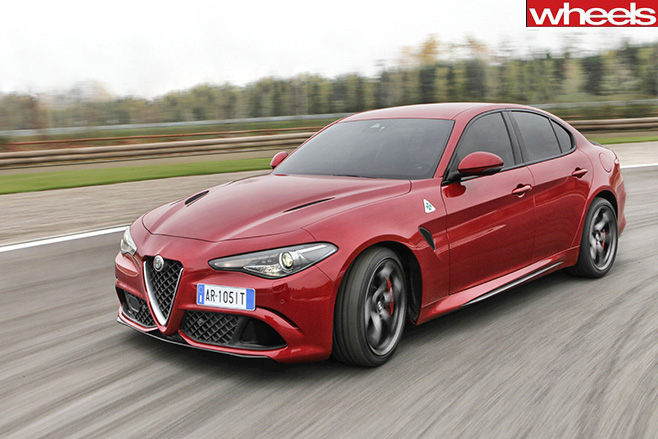
“What is Alfa Romeo? What numbers define us as a brand? Usually you don’t do it like that. You find some trade-off. But not this time,” Krief says.
They refused to compromise their overarching goal “to achieve ultimate driving satisfaction”. And while all those numerical targets speak to that, they are outcomes, he says, of sound core principles.
“We wanted to stay true to Alfa Romeo DNA. To focus on principles that made Alfa the king for many years. Alfa has always had extremely light products with good power-to-weight. Good balance and 50/50 weight distribution is also important. This leads to spontaneous, natural, dynamic….”
Dimensions were established early on. The 2820mm wheelbase is 8mm longer than BMW’s M3, and carries a body 15mm longer but with a 3mm-lower roofline. Aluminium double-wishbone front and multi-link rear suspension follow the lead of the 159 and 156 before it, with an increased focus on controlling wheel travel to maximise each tyre’s contact patch.
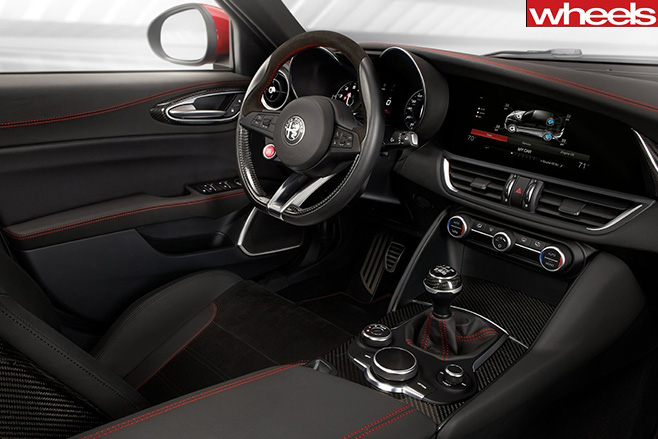
Once the driving position was set – and I can report it is spot-on, but more on that later – tactile elements were next: “You cannot have quick steering and long pedal stroke. You cannot have quick steering, quick pedal and long throw of gearlever. You need to have every component respond harmoniously, and progressively.”
Meanwhile, Pivetti’s team was working on three new engine families, each with strict targets around outputs, real-world performance and fuel efficiency.
Krief says a V8 was never seriously considered for the Quadrifoglio performance model: “No. We didn’t think about it because we were looking for power-to-weight ratio. To have in this platform a V8 would need it to be bigger [and therefore] too heavy. We would need to make it wider to accommodate a V8.
A 2.9-litre twin-turbo V6 was developed instead, and contrary to other reports it’s not the Ferrari 488’s 3.9-litre V8 with two fewer cylinders.
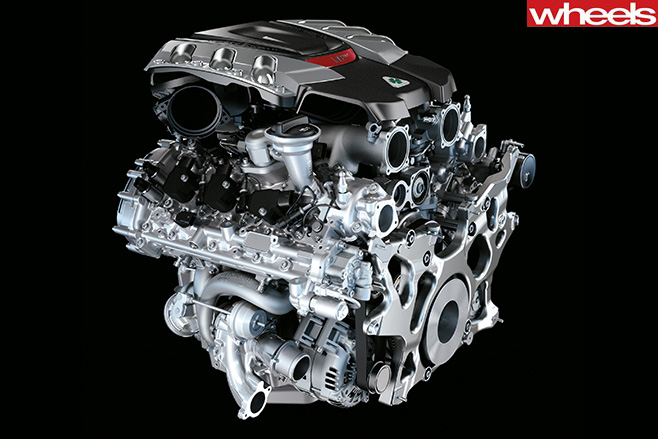
“No, no, no, no,” says Krief. “The only thing this engine has to do with Ferrari is the guy coming from Ferrari, Gianluca Pivetti. He was responsible for the V8 Ferrari development. This engine has cylinder deactivation. I don’t know a Ferrari that has cylinder deactivation. It has the culture of Ferrari, but it is not a Ferrari engine.”
Krief says the Quadrifoglio’s 375kW twin-turbo V6 has more to give if needed: “Today this engine is about 170-180 horsepower per litre. We can achieve more if we need to.” Mainstream Giulia models will be driven by either 2.0-litre turbo-petrol or 2.2-litre turbo-diesel fours. Both engines are available in Europe in several tunes, and with an eight-speed auto or six-speed manual. The Australian range, due in February, will be auto-only, kicking off with the 147kW petrol at about $60K.
Two more-expensive but also better-equipped Giulia Super models come next, one with the 147kW petrol engine, the other with a 132kW diesel. Wheels understands a higher-output 205kW version of the 2.0-litre turbo-petrol will power a Veloce model priced around $85-90K.
The Quadrifoglio performance flagship, which Alfa Romeo claims is capable of 0-100km/h in 3.9sec and a top speed of 307km/h, will go head to head with the BMW M3 and Mercedes-AMG C63 S sedan – but not on price. We’re told it will undercut the M3’s $139,900 tag. “We’ll have a sharp price,” said our Alfa Romeo Australia source.
Fabrizio Curci, Alfa Romeo’s European boss, says the Giorgio platform and the Giulia lead “a technical and cultural revolution for Alfa Romeo”.

“This is a platform created with global appeal,” he adds. “It has potential everywhere in the world. The plan is to hit 400,000 units running.
“This is just the first part of a much wider project.”
And all models on this platform will set benchmarks for Alfa Romeo, and possibly their respective classes, says the platform’s creator, Krief.
“The SUV will be the sportiest in that class. [As will] every car. The Quadrifoglio [version] has to be the most sporty version in its segment.”
Based on our first drive of the Giulia Quadrifoglio at Balocco, which starts overleaf, Alfa Romeo’s five billion euro bet is looking like a sure thing.
A question of quality
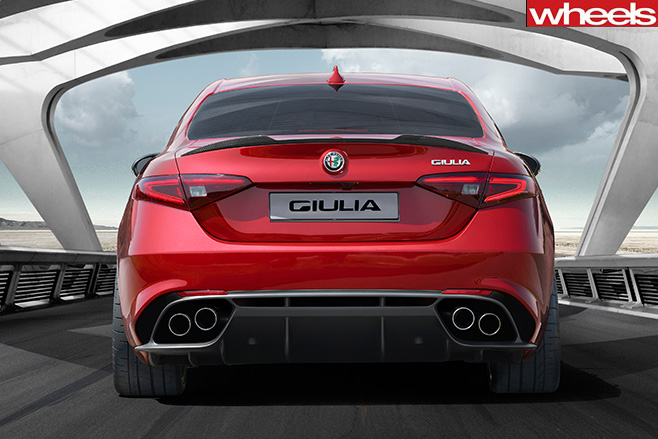
“Now it is completely different. Now we are relaunching everything. Doing completely new investment, new culture in the cars.
“For a long time I told [Marchionne], ‘No, I don’t want to join’. Because I had some doubts, the same doubts a customer may have. I changed my mind completely when I visited Cassino [the factory where the new Giulia is being produced].
“The assembly line, the body shop, and so on… I can assure you that the kind of investment that Marchionne did in Cassino is something unique. It’s completely up to date, with the best technology you can find in automation, robots, and in quality.”





